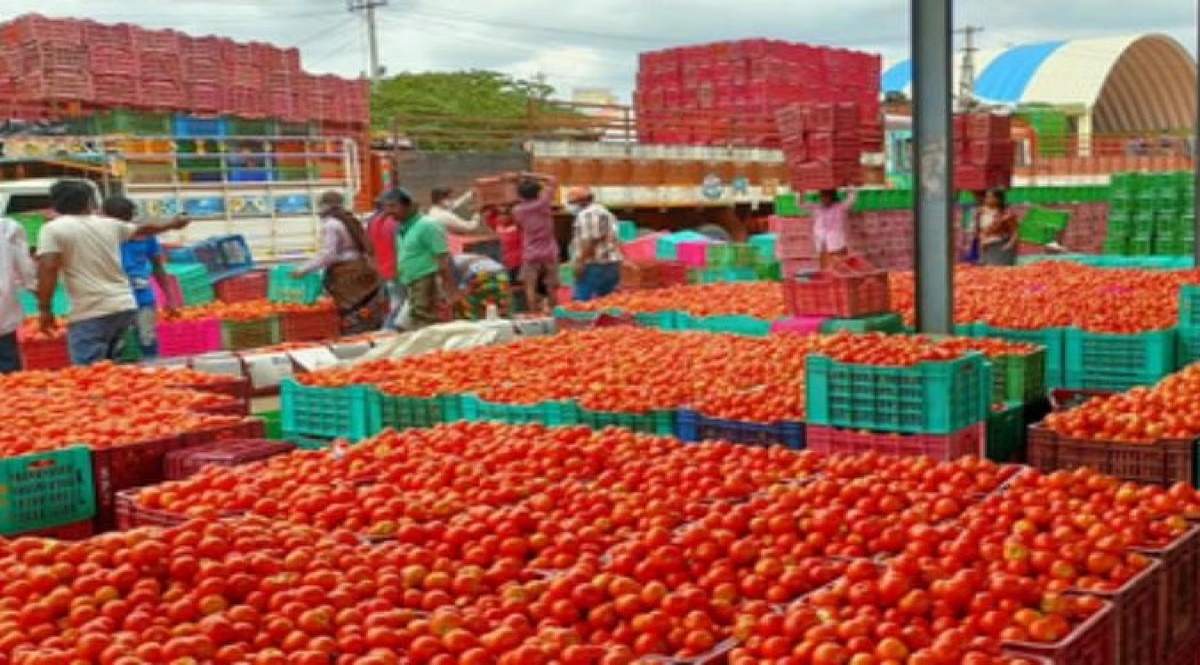[ad_1]
Retail prices of tomato, which rose to Rs 100/kg six weeks ago as heat waves adversely impacted output, has since moderated thanks to robust arrivals and prospects of good crop in Maharashtra, Karnataka, Andhra Pradesh and Telangana.
Officials said that retail prices of agricultural commodities such as rice, wheat, potato and sugar have witnessed a moderate spike compared to previous year while prices of key pulses – gram and tur and onion – have declined compared to year-ago period.
According to an agriculture ministry official, with Kharif crops – paddy, pulses, oilseeds, sugarcane and coarse cereals sowing picking up pace in the last fortnight after the revival monsoon rains especially over western, central, eastern and southern regions, prices are expected to moderate further in the next couple of months.
According to data by the department of consumer affairs, although average retail prices of tomato are still higher than the year ago period, prices have fallen by more than 17% to Rs 43 a kg on Saturday compared to a month ago.
The benchmark mandi prices of tomato at Kolar, Karnataka, were around Rs 800 a quintal on Saturday, up from Rs 530 that prevailed a year ago. However mandi prices were Rs 3,460 a quintal a month ago, witnessing a fall of 332% in the last one month.
“There are no reports of crop damage because of widespread monsoon rains in key tomato growing states such as Maharashtra, Karnataka, Andhra Pradesh and Telangana,” Uday Deolankar, former adviser to the Maharashtra agricultural prices commission, told FE. He said the new crop has started to arrive in the market and prices are expected to fall further in the next two weeks.
Last month, RBI Governor Shaktikanta Das had stated that spike in tomato prices could fuel food inflation.
The retail rice prices have witnessed a moderate increase of around 2% in the last one year. At present, the Food Corporation of India (FCI) has rice stock of 32.6 million tonne (MT) against the buffer requirement of 13.54 MT while this stock excludes around 17 MT of rice receivable from the millers. “Although paddy sowing is currently lagging behind by 22% compared to previous year, sowing will pick up pace in the next couple weeks,” an official said.
Wheat prices have increased by around 8% compared to a year ago despite a fall in production because of the heat wave in March while the government in May restricted grain exports for improving domestic supplies. The wheat production in the current crop year (July-June) was estimated at 106.41 MT by the agriculture ministry, which was a decline of 3% from 109.59 MT in 2020-21 crop year.
Against a bumper chana production of 13.98 MT in the 2021-22 crop year which was 17% more than previous year, the retail prices of pulse variety, which has more than 50% share in the country’s pulses production, has declined by 4% compared to a year ago. Tur retail prices have declined despite a moderate rise in production as imports have been robust.
Mandi prices of potato (Agra, Uttar Pradesh) witnessed a spike of 45% to Rs 1,340 a quintal on Saturday, from Rs 920 a quintal a year ago. Meanwhile, mandi prices of onion (Lasalgaon, Maharashtra) have dropped by 26% to Rs 1,240 a quintal on Saturday compared to a year ago, because of a bumper output.
[ad_2]
Image and article originally from www.financialexpress.com. Read the original article here.

